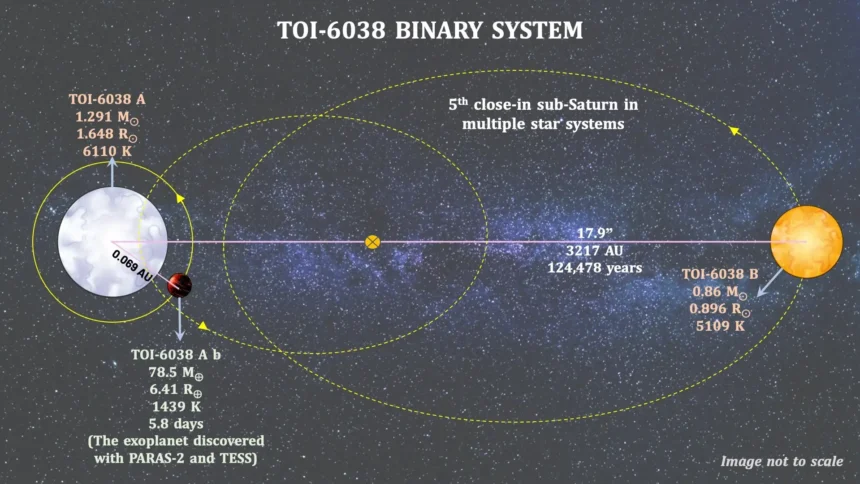NewzVille Desk
The scientists of the Physical Research Laboratory (PRL), Ahmedabad, have discovered a new exoplanet, a dense sub-Saturn size with a mass of 78.5 Earth masses and a radius of 6.41 Earth radii in a wide binary system.
The planet orbits a bright, metal-rich F-type star every 5.83 days in a circular orbit. The new Exoplanet (TOI-6038A b) lies in the transition region between Neptune-like and gas giant exoplanets, called as “Sub-Saturn,” a category absent in the solar system, providing a unique opportunity to study planetary formation and evolution.
This discovery marks the second Exoplanet discovery using the PARAS-2 spectrograph attached to the 2.5-meter telescope at PRL’s Mount Abu Observatory at Gurushikhar. Furthermore, it is the fifth Exoplanet detected using the combined efforts of the PARAS-1 and PARAS-2 spectrographs.
It highlights India’s growing expertise in advanced astronomical instrumentation, with the PARAS-2 spectrograph being the highest-resolution stabilized radial velocity (RV) spectrograph in Asia.
Precise Radial-Velocity data from PARAS-2, which was used to measure the mass of the planet, along with high-spatial resolution speckle imaging from the PRL’s 2.5-meter telescope, were thus absolutely crucial in validating the planetary nature of the transit signal and hence the discovery.
The preliminary analysis of the internal structure of TOI-6038A b is suggestive of a massive rocky core of about 3/4th (0.75) of its total mass and the remaining mass of the H/He envelope.
This offers valuable insights into the transition between terrestrial planets and gas giants. The system’s brightness makes it an excellent candidate for atmospheric characterization and spin-orbit alignment studies, which could refine theories on exoplanet migration. Additionally, the search for undetected companions in this system may further illuminate the factors driving its evolution.
The Physical Research Laboratory (PRL), Ahmedabad is an autonomous unit of Department of Space and a premier research institute engaged in basic research in the areas of Astronomy and Astrophysics, Solar Physics, Planetary Science and Exploration, Space and Atmospheric Sciences, Geosciences, Theoretical Physics, Atomic, Molecular and Optical Physics and Astro-chemistry.



